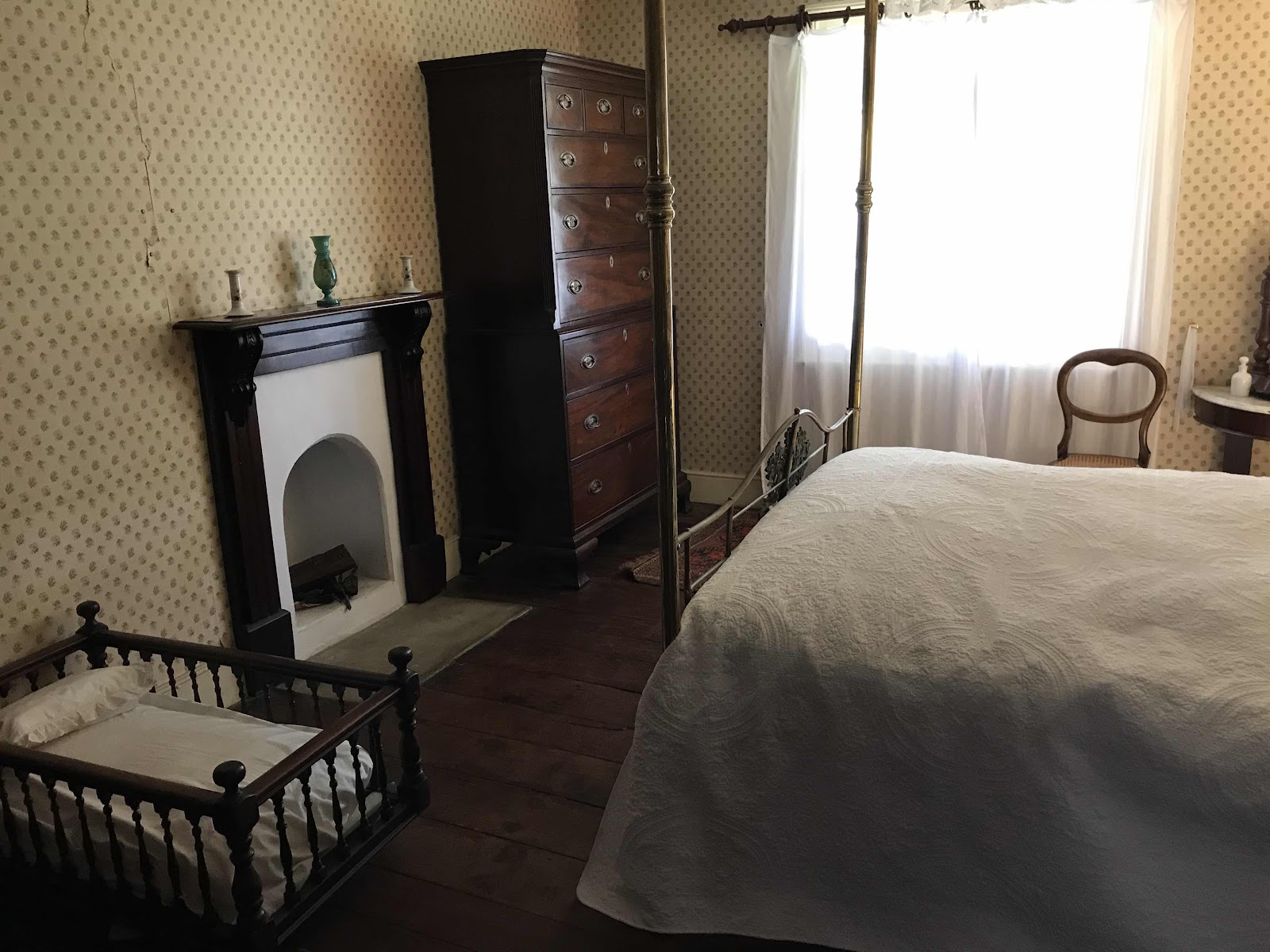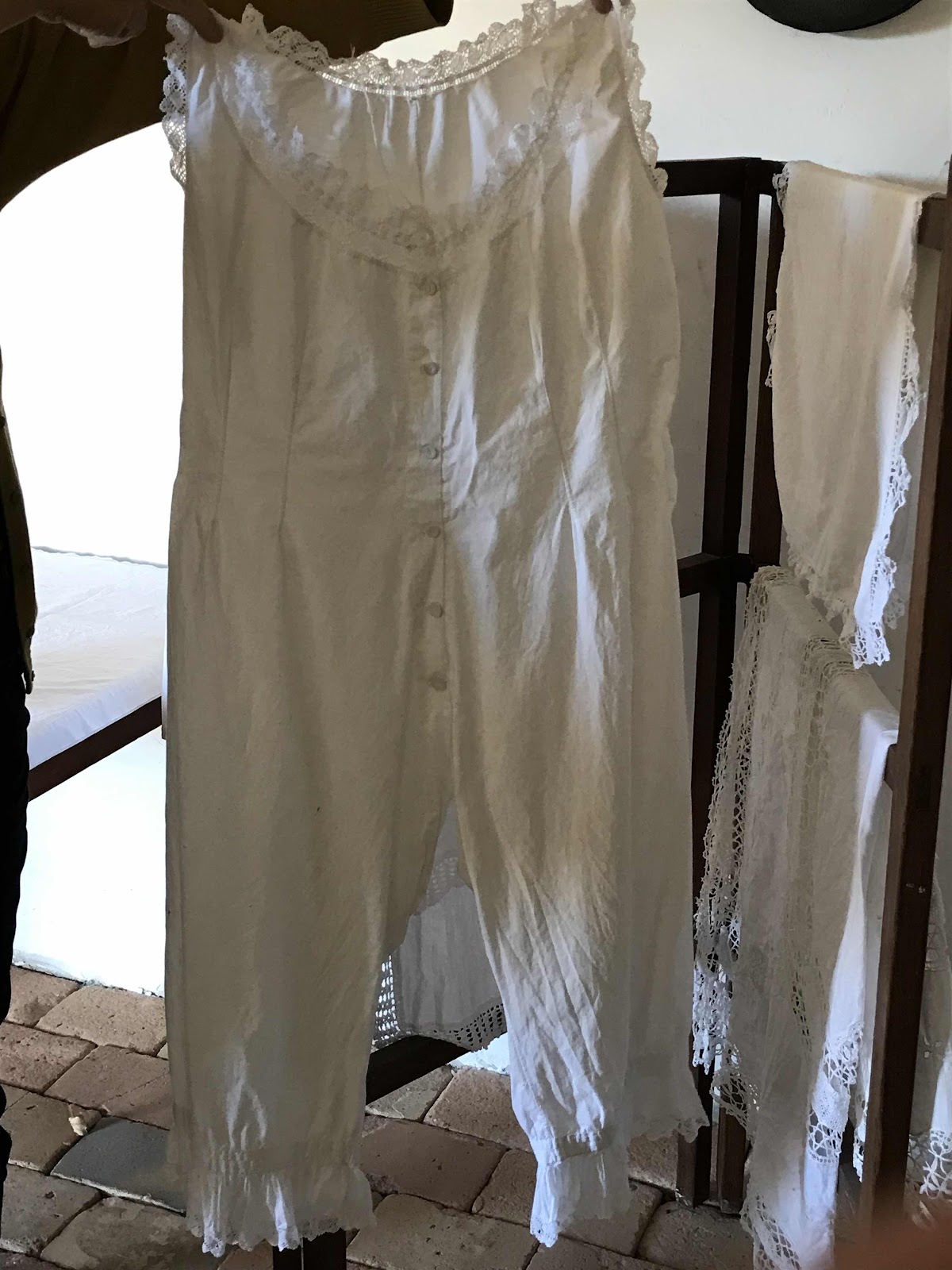This photo shows a stretch of samphire which is being restored and cleared of weeds. On the horizon can be seen the apartments where I live, but on the other side of the river:
Some people had much better zoom cameras and could photograph many of these birds.
I still like my iPhone because it is small and light.
At Tranby House we had to wait for the volunteers to open it up at 12.30 pm. The “pop-up” Tea Rooms had not popped up unfortunately but I had prepared for all eventualities!





The sideboard in the above photo was made by convict labour in Fremantle. Originally, the Swan River Colony had no convicts, only free settlers, but the severe shortage of labour led them to ask the British Government to send them some to help built infrastructure such as roads. At first, Tranby House relied on river transport to and from Perth.
The photo shows the long thin farmhouse with its shady verandas. The original shingle roof had been replaced in the preservation works. It was built in 1839 by Joseph Hardy, an early settler from Lincolnshire. He came with a group of Methodists who chartered their own boat Tranby, with the intention of spreading their religion in the newly created Swan River Colony. At that time, land was given to the early settlers in proportion to the amount of cargo they brought with them from England. Indentured labourers and servants also merited additional acres.
The Hardey Family also owned a second property on the Peninsula Farm, but Tranby House was the largest. More property was acquired inland, in York. The guide who took us around was full of information, more than we could absorb in one go. I just took photos as I listened to her:
The Hardey Family also owned a second property on the Peninsula Farm, but Tranby House was the largest. More property was acquired inland, in York. The guide who took us around was full of information, more than we could absorb in one go. I just took photos as I listened to her:
The sideboard in the above photo was made by convict labour in Fremantle. Originally, the Swan River Colony had no convicts, only free settlers, but the severe shortage of labour led them to ask the British Government to send them some to help built infrastructure such as roads. At first, Tranby House relied on river transport to and from Perth.
Unlike other settlers, Hardey had studied warm climate agriculture and knew what to plant. He was successful with olives and vines, among other things, and some of his trees still remain around the property:
The following photo shows a section of the roof shingles which have been preserved in a workshop area:


In the laundry area, we were amused by some ladies undergarments hanging up to dry:

There is a large cellar for food storage, now prone to damp when the river is high:
There is a large cellar for food storage, now prone to damp when the river is high:
We couldn’t go down as the steps are thought to be unsafe. The same applied to the stairs going to the upper floor from the kitchen, since there is no handrail:
This is fascinating. English settlers leave the same artifacts regardless of the continent. I could spin on that wheel and early houses here were shingled in those shakes. Did you see a loom?
ReplyDeleteThere wasn't a loom. Most of the furniture on display had been donated from other sources, though it was from the correct period. It seems that early settlers brought their piano with them as the favourite item. I'll try to investigate further into early looms.
ReplyDeletehttps://curiousweaver.id.au/australian-textile-history
ReplyDeleteThere is an interesting video on this website (not about W.A. though).